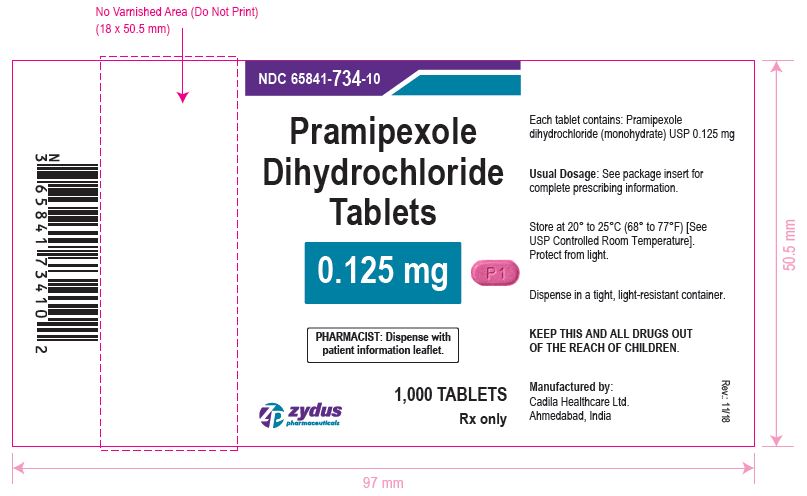Pramipexole is a medication known for its effectiveness in treating two significant health concerns: Parkinson’s disease and restless leg syndrome. It is classified as a dopamine agonist drug, which means it works by activating dopamine receptors in the brain. This helps to alleviate symptoms caused by a lack of dopamine, a key neurotransmitter responsible for regulating movement and coordination.
As always, please consult a medical professional for more information.
What is Pramipexole used for?

Pramipexole is a type of medication that belongs to a group called dopamine agonists. These medications work by acting like dopamine, which is a natural chemical in the brain. Their purpose is to help with transmitting signals in the brain that are responsible for controlling and improving motor functions.
Although pramipexole is effective in providing relief for conditions like Parkinson’s disease and restless leg syndrome, it does come with its own set of side effects. One particular group of these side effects is known as impulsive-compulsive spectrum disorders.
These disorders can appear in different forms such as compulsive gambling, overeating, or hypersexuality. It’s important to keep an eye on these behaviors while taking this medication, as they could have a significant impact on one’s quality of life.
Can Pramipexole be bought over the counter?
When considering the procurement of Pramipexole, it’s important to know that this medication is not available for over-the-counter purchase. It is a prescription medication, meaning it requires a medical professional’s authorization for use. This regulation ensures that the drug is used responsibly and with adequate medical supervision, given its potential side effects and the need for correct dosage. A healthcare professional’s guidance is crucial in managing the treatment and monitoring any occurring side effects.
Pramipexole: Uses and Dosage
Pramipexole is a key medication used to manage symptoms in individuals with Parkinson’s disease and restless leg syndrome. It works by acting like dopamine, an important chemical messenger that is often low in these conditions. By stimulating dopamine receptors in the brain, Pramipexole helps reduce motor symptoms such as tremors, stiffness, and slowness of movement in Parkinson’s patients, as well as relieve the uncomfortable sensations in the legs associated with restless leg syndrome.
Parkinson’s Disease Treatment
The recommended dosage for treating Parkinson’s disease with Pramipexole is as follows:
- Initial doses are typically 0.125 mg three times daily.
- The dose may be gradually increased over time.
- The maximum daily dose should not exceed 4.5 mg.
Restless Leg Syndrome Treatment
When using Pramipexole to treat restless leg syndrome, the dosage guidelines are slightly different:
- The starting dose is usually 0.125 mg once daily, taken 2-3 hours before bedtime.
- The dose may be increased if necessary.
- The maximum daily dose should not exceed 0.75 mg.
It is important to follow your doctor’s instructions regarding the dosage and schedule of Pramipexole. This will help ensure that you get the maximum benefits from the medication while minimizing any potential side effects.
Pramipexole: Administration and Storage
Pramipexole, like any medication, needs to be administered correctly and stored properly for optimum efficacy. When it comes to medication administration, follow your healthcare provider’s instructions closely. Pramipexole is usually taken orally, either with or without food.
Storage guidelines are simple but essential:
- Store this medication at room temperature, ideally between 20°C to 25°C (68°F to 77°F).
- Keep Pramipexole in a dry place, away from light and moisture.
- Do not store it in bathrooms or places with excessive humidity.
- Always keep the medication in its original packaging until it’s time for a dose.
Remember to keep Pramipexole, as well as all medications, out of reach of children. Never share your medications with others even if their symptoms appear similar to yours.
Pramipexole: Safe Disposal
Properly disposing of medication like Pramipexole is important to prevent harm to others and the environment. If you have unused or expired Pramipexole, do not throw it in the regular trash or flush it down the toilet. Instead, follow these steps:
- Check for a take-back program: Contact your local pharmacy or law enforcement agencies to find out if they have a drug take-back program where you can bring your medication.
- Use household disposal options if necessary: If there are no take-back options available, mix the medication with something undesirable like used coffee grounds or cat litter, put the mixture in a sealed plastic bag, and throw it away with your regular trash.
- Keep personal information private: Before throwing away prescription bottles or packaging, make sure to remove any personal information to protect your identity and privacy.
By making sure that medication is safely disposed of, you’re helping to keep our communities and ecosystems safe.
Pramipexole: Precautions, Warnings, and Interactions
When taking Pramipexole, there are several key precautions and warnings to be aware of:
Allergic Reaction Symptoms
Seek immediate medical attention if you experience any of the following symptoms:
- Rash
- Itching/swelling (especially of the face/tongue/throat)
- Severe dizziness
- Trouble breathing
Heart Failure Risk
Inform your doctor if you have a history of heart disease. Pramipexole may increase the risk of heart failure, so monitoring is essential.
Drug Interactions with Pramipexole
Pramipexole can interact with other medications, which may affect how it works or increase the risk of serious side effects. Be sure to discuss with your healthcare provider:
- Any other medications you are taking (including prescription drugs, over-the-counter drugs, and herbal products).
- Avoiding alcohol as it can increase certain side effects of Pramipexole.
- The potential for interaction with antipsychotic medications or other drugs that affect dopamine levels.
Always follow your healthcare professional’s instructions closely to minimize risks and ensure the effectiveness of the treatment.
Pramipexole: Common and Rare but Serious Side Effects
Pramipexole, like many medications, can cause side effects. Common reactions include:
- Dizziness
- Lightheadedness
- Fainting
- Nausea
- Vomiting
- Sedation
- Somnolence
Some might also experience disturbances in sleep patterns such as insomnia or suffer from memory issues such as amnesia.
On rare occasions, Pramipexole users may encounter serious side effects. These include:
- Unusual body movements – a symptom often associated with Parkinson’s disease itself.
- The manifestation of impulsive-compulsive behaviors. This could lead to compulsive gambling, overeating, or even hypersexuality.
If any of these side effects are experienced, it’s strongly recommended to seek immediate medical attention.
Read More: Abemaciclib: What is it and What you need to Know



